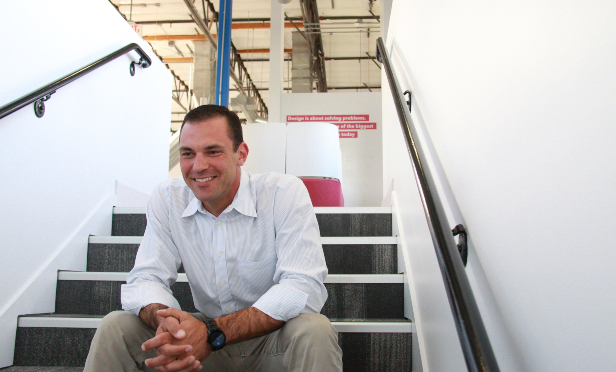As states begin the process of reopening, building owners are starting to strategize to re-open facilities safely. To ensure proper sanitation and to disinfect shared spaces, Los Angeles-based design firm Tangram has rolled out workplace sanitation best practices. The three-level program can be applied to all asset classes.
"Every site presents unique challenges, exposure scenarios and operational complexities. Tangram's treatments are designed to address each business' unique characteristics and minimize the impact to occupants and operations," Dave Teper, general manager of flooring and light construction at Tangram, tells GlobeSt.com.
Level one establishes routine maintenance for the property, which applies to all open areas, with the use of electrostatic fogging applications and an EPA-approved hospital-grade oxide. Next, level two is a deep sanitation that should be applied bi-annually. The process steps up level-one disinfection by damp wiping high-contact touch surfaces, using adenosine triphosphate meter testing to decontamination performed by EHS-biohazard cleanup technicians and documentation with photos and testing summary. Finally, level-three disinfection provides guidance for properties that have had a confirmed-case of COVID-19. In addition to levels one and two procedure, the third level includes a decontamination chamber and full bio-hazard PPE.
In addition to following these sanitation standards, Teper also recommends building owners utilize new technologies to decrease contact in the environment. This includes touchless doors, thermal scanner security kiosks, air purification and sanitization systems, Falkbuilt wall systems, electrostatic foggers, room occupancy sensors, Room Wizards and contact tracing wearable devices.
Owners should adopt this as a routine, ongoing program, and should be considered as part of the property's regular maintenance. "This dedicated maintenance program provides disinfection and sanitization services on a quarterly and annual basis," adds Teper. "An initial deep sanitization should occur at a minimum of twice per year. The recurrence of the Level 1 service depends on the amount of traffic in the space, but we currently recommend it on a monthly basis due to the pandemic."
These programs are likely to become akin to energy reduction and sustainability practices, and they could be a competitive tool to retain quality tenants and for businesses to retain employees. "Interest is very high as sanitation services are trending as the new employee retention tool," says Teper. "The proper documentation process seems to be the biggest driver in piquing the interest of owners, because there is great value in not only telling your staff, but also showing them what has been done. The cost can vary depending on how often and which services are performed—there is no one-size-fits-all solution as every facility has its unique demands."
© Touchpoint Markets, All Rights Reserved. Request academic re-use from www.copyright.com. All other uses, submit a request to [email protected]. For more inforrmation visit Asset & Logo Licensing.







